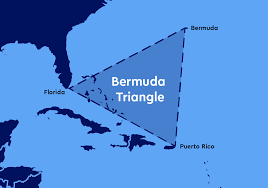The Merchant Navy is a vital part of global trade, transporting goods, oil, passengers, and essential supplies across oceans. It offers a unique career that combines adventure, travel, and good earning potential. However, before you set sail toward this profession, there’s one crucial factor you must know — the age limit for joining the Merchant Navy.
This blog will explain the Merchant Navy age limit in detail, covering different ranks, courses, entry routes, and exceptions, so you have a clear idea before applying.
Why Does the Merchant Navy Have an Age Limit?
The Merchant Navy demands physical fitness, mental agility, and the ability to work in challenging environments for extended periods. Setting an age limit ensures that candidates are physically capable of handling life at sea and can meet the rigorous demands of maritime work. It also aligns with international maritime regulations and training requirements.
General Merchant Navy Age Limit Criteria
The age limit to join the Merchant Navy varies depending on:
-
The course you choose (pre-sea training, cadetship, engineering, etc.).
-
The rank or position you are applying for.
-
The entry level — fresh cadet or experienced seafarer.
However, the general age range for most Merchant Navy courses is:
-
Minimum age: 17 years
-
Maximum age: 25 years for many officer and cadet training programs.
This means that if you’re just finishing school or college, you need to start your application process early to meet eligibility criteria.
Merchant Navy Age Limit for Different Courses
1. Deck Cadet Course (B.Sc. Nautical Science / Diploma in Nautical Science)
-
Minimum Age: 17 years
-
Maximum Age: 25 years (sometimes extended to 27 years for candidates with exceptional cases or sponsorships).
-
Candidates should have passed 10+2 with Physics, Chemistry, and Mathematics (PCM) and must be medically fit.
2. Marine Engineering
-
Minimum Age: 17 years
-
Maximum Age: 25 years for freshers.
-
For those joining after completing a Mechanical or Naval Architecture degree, the maximum age can extend to 28 years in some institutes.
3. Electro-Technical Officer (ETO) Course
-
Minimum Age: 17 years
-
Maximum Age: 35 years
-
This course has a higher upper age limit because many candidates join after completing an electrical/electronics engineering degree.
4. GP Rating Course
-
Minimum Age: 17.5 years
-
Maximum Age: 25 years
-
This course is for those aiming to join as a rating (non-officer rank) on ships. It requires basic schooling (10th or 12th pass) and physical fitness.
5. Graduate Marine Engineering (GME)
-
Minimum Age: 17 years
-
Maximum Age: 28 years
-
This is for engineering graduates from mechanical or naval architecture backgrounds who wish to join the engineering department of ships.
Lateral Entry Age Limits
For candidates with prior maritime or engineering experience, the age limit is often more flexible. For example:
-
Experienced engineers joining through short-term conversion courses can have upper age limits up to 35–40 years.
-
Seafarers moving from ratings to officer roles often have no strict upper age, provided they meet physical fitness standards.
Why Upper Age Limits Vary by Country and Company
While international guidelines exist, each maritime training institute and shipping company may set its own criteria. For example:
-
In India, the Directorate General of Shipping enforces strict age limits for cadet programs.
-
In European countries, officer cadet programs may allow candidates up to 30 years old.
-
Some private shipping companies are more flexible, especially if you have prior relevant qualifications.
Physical Fitness and Medical Standards
Meeting the age requirement is not enough — you must also pass a strict medical examination conducted by an approved doctor. The key health requirements include:
-
Vision: 6/6 in the better eye, 6/9 in the other eye (no color blindness).
-
Hearing: Normal hearing in both ears.
-
Overall health: No chronic illnesses, epilepsy, or mental disorders.
-
BMI: Should be within the healthy range.
Even if you meet the age criteria, failing the medical fitness test can disqualify you.
Age Relaxations and Exceptions
Some shipping companies and countries allow relaxation in age limits under specific conditions:
-
For ex-defense personnel: Candidates with navy or coast guard experience may get relaxation up to 35–40 years.
-
For higher qualifications: Those with marine-related master’s or engineering degrees may get additional years.
-
For sponsored candidates: Shipping companies that sponsor cadets sometimes negotiate higher upper age limits.
Why Starting Early is an Advantage
If you plan to join the Merchant Navy, applying early after completing your schooling or graduation has multiple benefits:
-
You will have more options for training courses.
-
You’ll have a longer career span at sea.
-
You’ll find it easier to meet physical fitness standards at a younger age.
-
You can progress through ranks faster and reach senior positions like Captain or Chief Engineer before retirement.
Merchant Navy Retirement Age
While entry age limits are strict, retirement ages are more flexible:
-
For officers, the typical retirement age is 60–65 years, depending on company policy and medical fitness.
-
Many continue working in shore-based maritime jobs (port operations, marine consultancy, teaching) after retiring from sea service.
Final Thoughts
The Merchant Navy age limit is not just a number — it’s a gateway to a challenging and rewarding career at sea. For most cadet-level entries, the age range is 17 to 25 years, but engineering and technical roles often allow older candidates, even up to 35 years or more. Starting early gives you the advantage of a longer career span, better physical fitness, and faster promotions.
If you dream of working on ships, traveling the world, and earning a good living, make sure you plan your education and applications to fit within the age criteria. Remember — the sea waits for no one, and in the Merchant Navy, timing truly matters.
